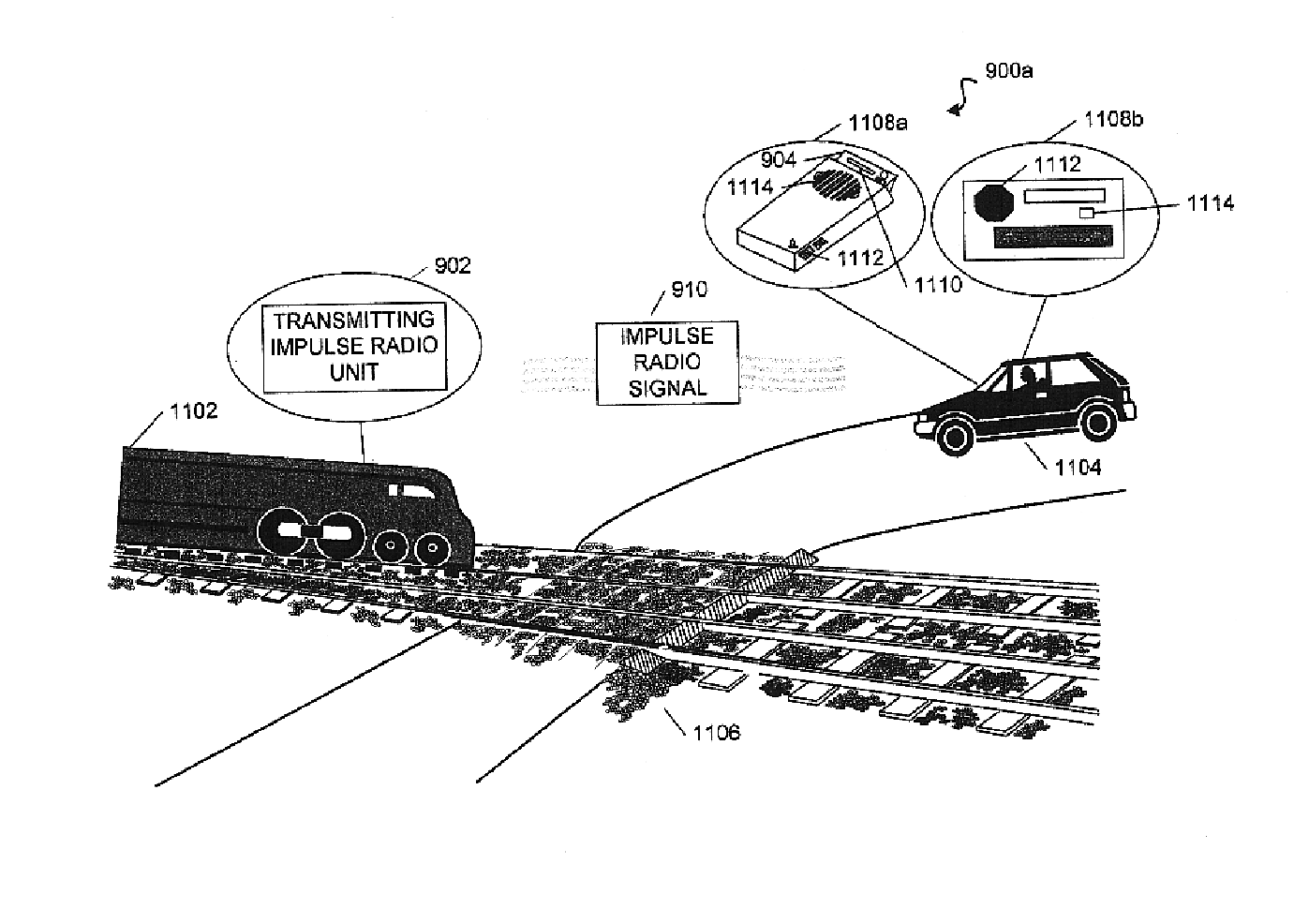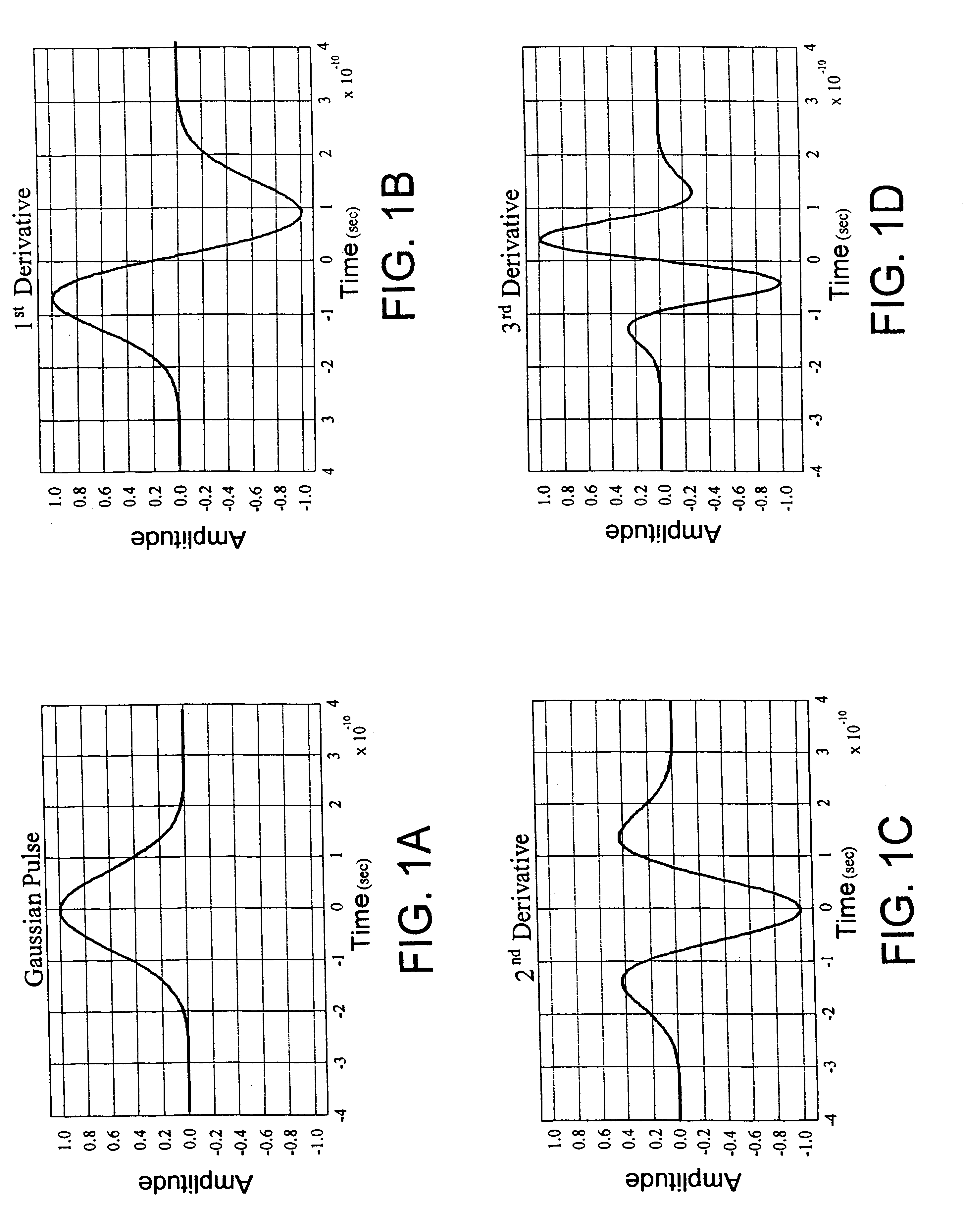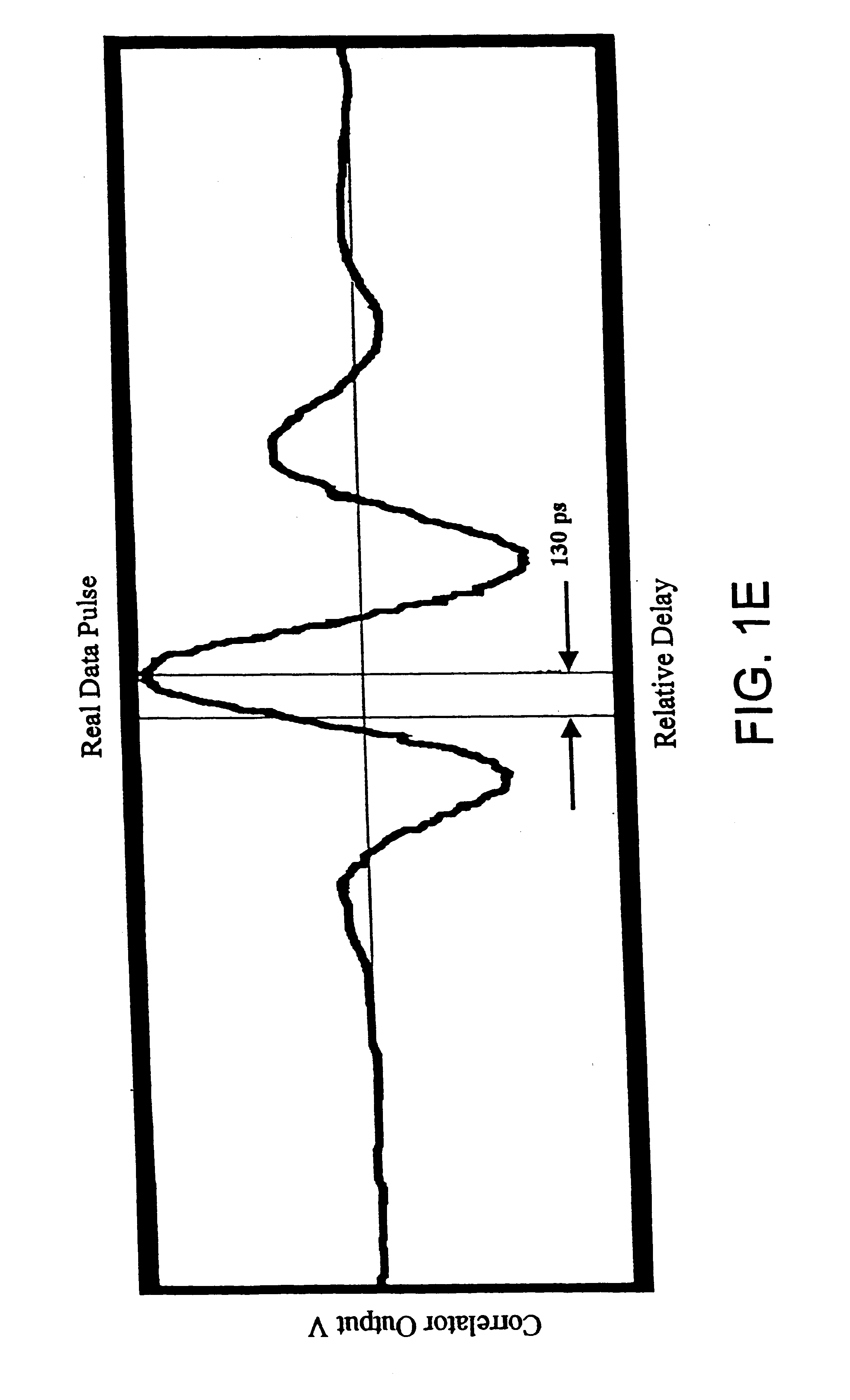Railroad collision avoidance system and method for preventing train accidents
a collision avoidance system and train technology, applied in the rail field, can solve the problems of inacceptable number of train-vehicle accidents, interference from other radios, and 200,000 railroad crossings are passive railroad crossings,
- Summary
- Abstract
- Description
- Claims
- Application Information
AI Technical Summary
Benefits of technology
Problems solved by technology
Method used
Image
Examples
first embodiment
Referring to FIGS. 11 and 12, there are diagrams illustrating in greater detail the components and steps of the railroad collision avoidance system 900a and method 1000a. In this embodiment, the railroad collision avoidance system 900 includes a transmitting impulse radio unit 902 coupled (step 1202) to a locomotive 1102 and a receiving impulse radio unit 904 coupled (step 1204) to a vehicle 1104 (shown as a car). The transmitting impulse radio unit 902 operates to transmit (step 1206) an impulse radio signal 910 having a known pseudorandom sequence of pulses that look like a series of Gaussian waveforms (see FIGS. 1-3) towards the receiving impulse radio unit 904 attached to the vehicle 1104. In particular, the transmitting impulse radio unit 902 may continually transmit the impulse radio signal 910 or it may transmit the impulse radio signal 910 whenever a whistle (for example) on the locomotive 1102 is activated to indicate that the locomotive 1102 is a predetermined distance fro...
second embodiment
Referring to FIGS. 13 and 14, there are diagrams illustrating in greater detail the components and steps of the railroad collision avoidance system 900b and method 1000b. In this embodiment, the railroad collision avoidance system 900b includes a transmitting impulse radio unit 902 coupled (step 1402) to a locomotive 1102 and a receiving impulse radio unit 904 coupled (step 1404) to an active railroad pole 1302. The transmitting impulse radio unit 902 operates to transmit (step 1406) an impulse radio signal 910 having a known pseudorandom sequence of pulses that look like a series of Gaussian waveforms (see FIGS. 1-3) towards the receiving impulse radio unit 904 attached to the railroad pole 1302 (two are shown). In particular, the transmitting impulse radio unit 902 may continually transmit the impulse radio signal 910 or it may transmit the impulse radio signal 910 whenever a whistle (for example) on the locomotive 1302 is activated to indicate that the locomotive 1302 is about to...
third embodiment
Referring to FIGS. 15 and 16, there are diagrams illustrating in greater detail the components and steps of the railroad collision avoidance system 900c and method 1000c. In this embodiment, the railroad collision avoidance system 900c includes a transmitting impulse radio unit 902 coupled (step 1602) to a control box 1502 and a receiving impulse radio unit 904 coupled (step 1604) to a vehicle 1104. The control box 1502 is located next to railroad tracks 1504 and is capable of using a sensor 1506 (e.g., electromagnetic sensor, motion detector, percussion sensor) to sense the presence of a locomotive 1102. Moreover, the control box 1502 can be powered by a variety of power sources including, for example, a solar battery or a power line.
The transmitting impulse radio unit 902 operates to transmit an impulse radio signal 910 having a known pseudorandom sequence of pulses that look like a series of Gaussian waveforms (see FIGS. 1-3) towards the receiving impulse radio unit 904 attached ...
PUM
 Login to View More
Login to View More Abstract
Description
Claims
Application Information
 Login to View More
Login to View More - R&D
- Intellectual Property
- Life Sciences
- Materials
- Tech Scout
- Unparalleled Data Quality
- Higher Quality Content
- 60% Fewer Hallucinations
Browse by: Latest US Patents, China's latest patents, Technical Efficacy Thesaurus, Application Domain, Technology Topic, Popular Technical Reports.
© 2025 PatSnap. All rights reserved.Legal|Privacy policy|Modern Slavery Act Transparency Statement|Sitemap|About US| Contact US: help@patsnap.com



